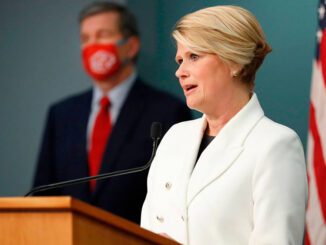
New numbers released by the N.C. Department of Public Instruction show large increases in public charter school enrollment. More students are finding the public school option that works best for them, and this should be cause for celebration.
Unfortunately, some corners view the expansion of educational freedom as a threat that should be stopped. Such critiques center the public school debate on systems, not students. That view is misguided.
State enrollment in public charter schools grew by 6.4% last year, and by 19.2% since before the pandemic. Clearly, parents view options in public schooling favorably, and they want more.
Despite resounding parental preference, however, public charter growth is prompting renewed scrutiny and calls to limit expansion. Dr. Helen Ladd, a frequent charter critic who serves on Gov. Roy Cooper’s Commission on Access to Sound, Basic Education, wrote in a new report that charter growth “should be severely restricted.” Among her claims: Charter schools worsen segregation, disrupt district funding, and are not sufficiently accountable. Lauren Fox of the Public School Forum of North Carolina voiced similar concerns in a recent EdNC article.
The truth is that public charter schools do not harm district budgets. Like all public schools, charter schools receive funding based on the number of students they educate. If a student leaves a district school to attend a public charter school, then the charter school must bear the cost of educating that student.
Moreover, compared to district schools, charter schools educate their students with far less funding. A new online tool from Best NC shows charter schools received just 63% of the local funding district schools received.
Where are the calls for funding fairness from those who purport to care about equity for students? Public charter school students are no less deserving of local education funding than district school students.
And claims that public charter growth promotes segregation are emotive — but not evidence-based. In North Carolina, the charter school population is diversifying rapidly, with minority students largely driving growth. A new report on charter enrollment trends shows White N.C. charter enrollment increased 7.29% during the pandemic — but Black enrollment jumped 14.33% and Hispanic enrollment surged by 23.34%. The proportion of Black students in public charter schools and district schools is nearly identical.
Public charter schools are open to all and do not set admissions requirements. If seats in a public charter school exist, all who apply earn admission. If enrollment applications exceed capacity, charter schools hold a random lottery. What’s more, one-third of the state’s charter schools now weight their lotteries to prioritize enrollment of low-income and educationally disadvantaged students.
Finally, public charter schools already adhere to high standards of accountability. They follow a stringent Performance Framework established by the N.C. State Board of Education. They participate in the state’s testing and accountability program. But charter schools also face the ultimate test of accountability. If they consistently fail to meet operational, financial, and academic standards, they can lose their charter and close.
In the end, charter schools complement, rather than compete with, district schools. Both are part of North Carolina’s public school family. Criticisms of one form of public schooling—presumably to protect another—distract us from our great and common goal: ensuring students can access an excellent education.
Pandemic enrollment patterns prove parents want choice in public education. It’s up to all of us to make sure they continue to get it.
Lindalyn Kakadelis is the executive director of the North Carolina Coalition for Charter Schools.

